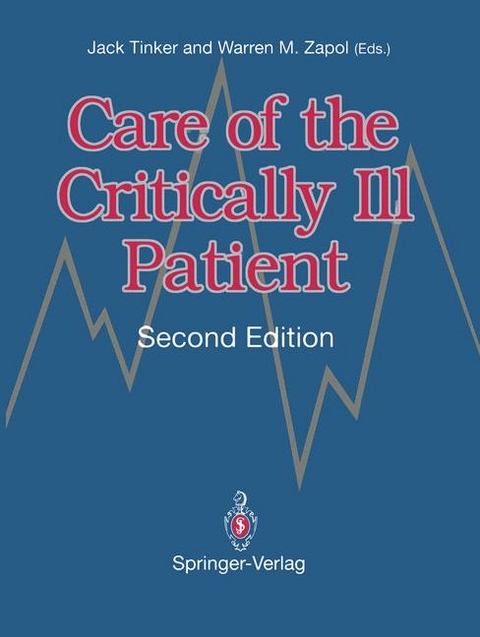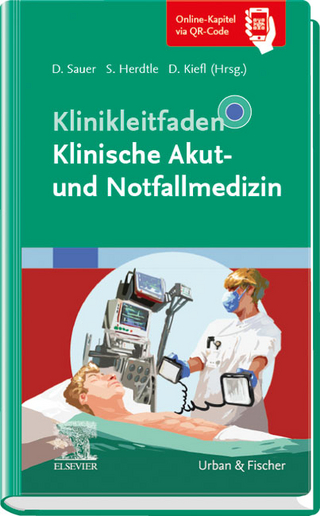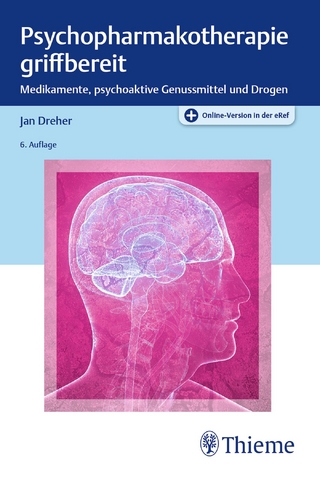
Care of the Critically Ill Patient
Springer London Ltd (Verlag)
978-1-4471-3402-2 (ISBN)
- Titel wird leider nicht erscheinen
- Artikel merken
Nine years have passed since the first edition of Care of the Critically III Patient was published. As its editors Maurice Rapin and I were fortified by the many positive and helpful comments of reviewers and readers: the work appeared to have fulfilled our original aims and objectives. Intensive care medicine has, of course, advanced and changed in many ways since 1982 and it therefore seemed appropriate to consider the preparation of a second edition. Encouraged by the reception of the first and the timely prompting of the publishers we began, in 1986, to prepare for a new edition. Caring for critically ill patients is of universal concern and we were therefore delighted when Warren Zapol joined us as C'n editor widening our international base. The three of us subsequently spent many happy and productive times together planning the content, priorities, scale and contributions for the new edition. A great tragedy then overcame us: Maurice Rapin died suddenly. His death deprived us of a true friend and colleague who had been an international pioneer during the development of intensive care medicine. I will always remember, with affection and professional pride, the many hours he and I worked together in preparing the first edition of this book and also as founding editors of the now firmly established journal Intensive Care Medicine. An obituary, written by Warren Zapol, that appeared in the journal follows the Preface.
List of Contributors.- Section A. Applied Physiology.- 1 Measurement and Control of Cardiac Output.- Cardiac Output at Rest and on Exercise.- Intrinsic Properties of Heart Muscle.- Coronary Blood Flow.- Assessment of the Heart as a Pump.- Cardiac Output during Exercise and Cardiac Failure.- 2 The Systemic and Pulmonary Circulations.- Functions of the Circulation.- Functional Organization of the Circulation.- The Systemic Circulation.- The Pulmonary Circulation.- Implications of Circulatory Physiology in Critical Care.- 3 Cardiopulmonary Interactions.- I. The Physiology of Cardiopulmonary Interactions Transmural Pressure.- Myocardial Function.- Cardiac Function: Left Heart Versus Right Heart.- The Cardiac Fossa.- Hemodynamic Effects of Ventilation.- Hemodynamic Effects of Changes in Lung Volume.- Hemodynamic Effects of Changes in Intrathoracic Pressure.- II. Clinical Aspects of Cardiopulmonary Interactions.- Negative Changes in Intrathoracic Pressure: Spontaneous Inspiration.- Positive Changes in Intrathoracic Pressure: Spontaneous Expiration.- Positive-Pressure Ventilation: Concepts.- Modes of Mechanical Ventilation.- 4 Pulmonary Ventilation and Gas Exchange.- Ventilation.- Diffusion.- Perfusion.- Ventilation-Perfusion Ratios.- 5 Oxygen Transport and Consumption.- Determinants of Tissue Oxygen Tension.- Classification of Hypoxia.- Recognition of Tissue Hypoxia.- Venous Oxygen Tension as an Index of Tissue Hypoxia.- Tissue Oxygen Extraction.- Physiological Versus Pathological Oxygen Supply Dependence.- 6 Mediator Systems of Lung Injury.- Humoral Mediators.- Cellular Mediators.- Conclusions.- 7 Fluid and Electrolyte Balance.- Distribution of Body Water.- Relationship Between Plasma and Interstitial Fluid.- Relationship of Intracellular to Extracellular Interstitial Fluid.- Water and Electrolyte Balance.- 8 Acid-Base Disturbances.- Buffering.- Respiratory Control of Acid-Base.- Renal Control of Acid-Base.- Metabolic Control of Acid-Base.- Interpretation of Acid-Base Data.- Respiratory Acidosis.- Respiratory Alkalosis.- Metabolic Acidosis.- Metabolic Alkalosis.- 9 Mechanisms of Haemostasis.- Physiology of Haemostasis.- The Investigation of Haemostatic Disorders.- 10 Cerebral Blood Flow and Metabolism.- Cerebral Blood Flow.- Cerebral Metabolism.- Conclusions.- 11 Defense Strategies Against Hypoxia.- Normal and Abnormal Pasteur Effects.- Oxygen Regulators and Oxygen Conformers.- Metabolite Signals Sustaining Stable Respiration in Oxygen Regulators.- Loss of Standard Electron Transfer System-Glycolysis Integration in Oxygen Conformers.- Oxygen as a Signal Controlling Oxygen Conformity.- Oxygen Management Strategies in Diving Seals.- 12 Humoral and Cell-Mediated Immunity.- The Normal Immune System.- Immunity and Infection.- Pathological Consequences of Immunity.- Immunodeficiency.- 13 Regulation of Body Temperature.- Thermal Equilibrium.- Physiological Measurement of Thermal Strain.- Effects of Heat.- Effects of Cold.- Mathematical Models of Thermoregulation in Man.- Central Nervous Control.- Thermoreception.- Fever.- Effects of Drugs on Thermoregulation.- 14 The Physiology of the Newborn.- Cardio-respiratory Adaptation.- Blood Pressure in the Neonate.- Thermoregulation in the Neonate.- Renal Function.- Neonatal Jaundice.- Pain in the Neonate.- Section B. Cardiovascular Disorders.- 15 Cardiopulmonary Resuscitation.- The Therapeutic Approach to CPR.- The Heart and CPR.- The CNS and CPR.- Monitoring the Brain during CPR.- The Brain After CPR.- Management of Brain Dysfunction and Damage.- Judging the Effectiveness of CPR: Stage 1 Success or Failure.- Pulmonary Function.- Drug Therapy.- Inotropic Agents.- Metabolic Acidosis.- Antidysrhythmic Agents.- Electrolyte Disturbances.- Routes of Drug Administration.- Cannulation of Vessels.- Fluid Expansion.- Artificial Pacemaking.- Abandoning CPR.- Complications of Chest Compression.- Effectiveness of CPR: Stage 2 Success or Failure.- Appendix 1: Mobile Equipment for CPR Trolley.- 16 The Cardiac Dysrhythmias.- Introduction: The Cardiac Rhythm.- Classification of Dysrhythmias.- Mechanisms of Dysrhythmias.- Consequences of Cardiac Dysrhythmias.- Indications for Treatment of Cardiac Dysrhythmias.- Management of Cardiac-Specific Dysrhythmias.- Classification of Anti-arrhythmic Drugs.- Conclusion.- 17 The Pathophysiology of Shock.- History.- Types of Circulatory Shock.- Normal Cardiovascular Homeostasis.- Pathophysiology: Mediators.- Mediators of Circulatory Shock.- Receptors/Middle Messenger Systems.- Shock-Induced Alterations of Metabolism.- Specific Organ Systems.- 18 Management of Shock.- Diagnosis of Shock.- Therapeutic Goals.- Therapy for the Failing Heart.- Management of High Cardiac Output "Distributive" Shock.- Diagnosis and Management of Sepsis.- Role of Steroids in the Management of Shock.- How to Manage the Profoundly Shocked Patient.- 19 Acute Myocardial Infarction.- Emergency Treatment of Evolving Myocardial Infarction.- Early Complications and Their Treatment.- 20 Hypertensive Crisis.- Sodium Nitroprusside.- Nitroglycerin.- Diazoxide.- Hydralazine.- Autonomic Inhibition.- Calcium Channel Antagonists.- Adenosine Compounds.- Conclusion.- 21 Diagnosis and Management of Pulmonary Embolism.- Incidence and Predisposing Factors.- Pathophysiology.- Diagnosis.- Treatment.- Long-term Management and Prognosis.- Prevention.- 22 Postoperative Cardiac Surgical Care.- Low Cardiac Output.- Intra-aortic Balloon Pumping (IABP).- Cardiac Dysrhythmias.- Renal Failure.- Intraoperative Myocardial Injury.- 23 Applied Pharmacology of Cardiovascular Drugs.- Applied Pharmacokinetics.- Antidysrhythmic Agents.- Vasodilator Drugs.- Inotropes and Inotrope Vasodilators.- Diuretics.- Antithrombotic and Thrombolytic Agents.- 24 Congestive Heart Failure: Acute and Chronic.- Definitions.- Epidemiology and Prognosis.- Etiology.- Compensatory Mechanisms.- Characterization.- Diagnosis.- Treatment.- Section C. Respiratory Disorders.- 25 Recovery from Anesthesia.- Purposes of the Post Anesthesia Care Unit.- History of the Recovery Room.- Patient Transfer from Operating Room to PACU.- Admission and Discharge.- Pharmacology of Anesthetic Recovery.- Problems Occurring in the PACU Patient.- Conclusion.- Appendix: Minimal Standards of Care for Post Anesthesia Care Unit Patients.- 26 Airway Management and Mechanical Ventilation During Acute Respiratory Failure.- Airway Management.- Practical Application of Ventilatory Support Systems.- PEEP and F1O2.- Monitoring of Respiratory Function.- Summary.- 27 Overview of Acute Respiratory Failure and the Adult Respiratory Distress Syndrome.- Acute Respiratory Failure.- Adult Respiratory Distress Syndrome.- 28 Pathophysiological Pathways of the Adult Respiratory Distress Syndrome.- Lung Alterations in Early ARF (Hours to Days).- Late Alterations in Severe ARDS (Days to Weeks).- Treatment of ARDS.- 29 Mechanical Ventilation and Weaning.- Physiology of Spontaneous Breathing and Mechanical Ventilation.- Mechanical Ventilation.- Weaning.- 30 Complications of Mechanical Ventilation.- Bronchopulmonary Superinfection.- Damage to Airways and Lung Parenchyma.- Cardiocirculatory Depression.- Impairment of Neurological, Renal and Hepatic Function.- 31 Diagnosis of Pulmonary Infections.- Infections Causing Respiratory Failure.- Infections in Patients Hospitalized with Serious Illness.- 32 Postural Effects on the Acutely Injured Lung.- The Effects of Position on the Healthy Lung.- The Effects of Position During Acute Lung Injury.- Unilateral Lung Disease.- Bilateral Lung Disease.- Section D. Renal, Electrolyte And Metabolic Disorders.- 33 Acute Renal Failure.- Causes of Acute Uraemia.- Clinical Syndromes of ARF.- Thrombotic Microangiopathies.- Diagnosis and Management of ARF.- Investigations.- Management.- Prognosis of ARF.- 34 Fluid and Electrolyte Disorders.- Disorders of Sodium and Fluid Balance: Hyponatraemia and Hypernatraemia.- Hypokalemia and Hyperkalaemia.- Hypocalcaemia and Hypercalcaemia.- Hypophosphataemia and Hyperphosphataemia.- Hypomagnesaemia and Hypermagnesaemia.- Metabolic Disorders of Acid-Base Balance.- 35 Nutritional Failure.- Normal Body Composition.- Starvation and Injury.- Importance of Nutritional Support.- Nutritional Assessment.- Nutritional Support.- Protein Sparing.- Protein and Caloric Requirements.- 36 Optimizing Nutritional Support.- Metabolic Alterations in Critical Illness.- Energy Metabolism.- Nutritional Support.- Techniques of Nutrient Administration.- Nutritional Recommendations.- Organ Dysfunction.- Conclusions..- 37 Acute Hepatic Failure.- and Definitions.- Etiology and Diagnosis.- Clinical Features and Management.- Specific Aspects of Management.- Assessment of Prognosis.- Liver Transplantation.- 38 Postoperative Care Following Hepatic Transplantation.- Immunosuppression.- Function of the Transplanted Liver.- Primary Non-Function of the Transplant.- Treatable Causes of Graft Dysfunction.- Surgical Complications.- Medical Complications.- 39 Acute Pancreatitis.- Etiology.- Pathogenesis.- Diagnosis of Pancreatitis.- Medical Treatment of Acute Pancreatitis.- Surgical Treatment of Pancreatitis.- Attempts to Modify the Early Course of Pancreatitis.- Recommended Surgical Responses to Specific Complications of Acute Pancreatitis.- Persisting Pancreatitis.- 40 Stress Ulceration.- Definition.- Pathology.- Aetiology and Incidence.- Clinical Features and Diagnosis.- Pathogenesis.- Prophylaxis.- Treatment of Acute GI Haemorrhage.- 41 Diarrhoea in the Critically Ill.- Pathophysiology.- Causes of Diarrhoea.- Management.- Conclusion.- Section E. Haematological Disorders.- 42 Disorders of Haemostasis.- Disseminated Intravascular Coagulation.- Liver Disease.- Haemostatic Defects of Uraemia.- Coagulopathy Following Head Injury.- Coagulopathy of Cardiopulmonary Bypass Surgery.- Vitamin K Deficiency in Gastrointestinal Disorders.- Haemostatic Defects Associated with Massive Transfusions.- Complications of Anticoagulant and Thrombolytic Drugs.- 43 The Use of Blood and Blood Products.- The Blood Products: Their Composition, Uses, Administration and Contraindications.- The Use of Blood Products in Rapid Large Volume Transfusions.- Transfusion in the Anaemic Critically Ill Patient.- The Use of Microaggregate Blood Filters.- Fibronectin and Blood Products.- Bedside Checking Routines and Serious Errors in Administering Blood.- Ordering Blood and Blood Products.- 44 Hazards of Blood Transfusion.- Non-infectious Hazards of Blood Transfusion.- Infectious Hazards of Blood Transfusion.- 45 Plasma Substitutes.- Physicochemical Characteristics of Plasma Substitutes.- Natural Colloids.- Artificial Colloids.- Dextrans.- Gelatin.- Hydroxyethyl Starch.- Adverse Effects of Colloidal Plasma Substitutes.- 46 Intensive Care for Patients with Malignant Disease.- Life-Threatening Medical Complications of Malignant Disease.- Infection.- New Pulmonary Infiltrates.- Respiratory Failure.- Haemorrhage.- Metabolic Disturbances.- Cardiovascular Disturbances.- Gastrointestinal Disorders.- Renal Disorders.- Neurological Disorders.- Hyperviscosity Syndrome.- Graft-Versus-Host Disease.- Postoperative Intensive Care.- Prognosis.- Section F. Endocrine Disorders.- 47 Endocrine Emergencies.- Thyroid Gland.- Adrenal Glands.- Pituitary Gland.- Problems in Pregnancy.- Gut Hormones.- Disorders of Mineral Metabolism.- 48 Diabetic Coma.- Crystalloid vs Colloid Infusion.- Intravenous Bicarbonate.- Intravenous Phosphates or Other Supplements.- Anion or Hyperchloraemic Acidosis.- Non-ketotic Hyperglycaemic Coma.- Action List.- Section G. Trauma.- 49 Multiple Injuries.- Definition of Multiple Injury.- Injury Severity Indices.- Early Clinical Considerations in Multiple Trauma Management.- Systemic Effects of Multiple Trauma.- 50 Transporting the Critically Ill.- History 81.- Transport Systems.- Modes of Transport.- Primary Transportation.- Secondary Transportation.- Conclusions.- 51 The Intensive Care of Head-Injured Patients.- General Information.- Structural Pathology.- Cellular and Metabolic Disruption.- Pathophysiology.- Initial Evaluation.- Haematoma.- Disseminated Intravascular Coagulation.- Systemic Hypertension.- Pulmonary Dysfunction.- Ventilation.- Monitoring.- Surgical Decompression.- Pharmacological Control of Intracranial Hypertension.- The Prediction of Outcome.- Is Intensive Care of Head Injuries Worthwhile?.- 52 Acute Cervical Spinal Cord Injury.- Vascular and Rheological Considerations.- Biomechanics.- Physiopathology and Therapy.- Diagnosis.- Critical Care Components of Acute Cervical Cord Trauma.- 53 Chest Trauma.- Blunt Thoracic Trauma.- Penetrating Chest Wounds.- 54 Care of Burns.- Initial Assessment.- Airway Management and Inhalation Injury.- Fluid Resuscitation.- Escharotomy and Fasciotomy.- Wound Closure.- Nutrition.- Bacteriology and Infection.- Complications.- 55 Drowning and Near-Drowning.- Definitions.- History of Drowning.- Epidemiology.- Pathophysiology of Drowning.- Treatment.- Section H. Neurological Disorders.- 56 Coma.- Definitions.- Pathophysiology.- Clinical Examination.- Classification.- Prognosis.- Therapy.- 57 Brain Stem Death.- Historical Background.- Brain Stem Death: Diagnosis.- The Preconditions for Brain Stem Death.- Tests for the Confirmation of Brain Stem Death.- Some Practical Details.- 58 Cerebral Oedema.- Vasogenic Cerebral Oedema.- Cytotoxic Cerebral Oedema.- Hydrostatic Cerebral Oedema.- Hypo-osmotic Oedema.- Congestive Brain Swelling.- Common Problems Associated with Brain Oedema.- Increased Intracranial Pressure.- Clinical Indications of Cerebral Oedema.- Diagnosis of Cerebral Oedema.- Cerebral Oedema and Brain Shift.- Management of Cerebral Oedema and Raised Intracranial Pressure.- Steroid Therapy.- Osmotherapy.- Cerebral Blood Volume Reduction.- Continuous Drainage of Cerebrospinal Fluid.- Conclusions.- 59 Guillain-Barre Syndrome and Myasthenia Gravis.- Guillain-Barre Syndrome.- Myasthenia Gravis.- Lambert-Eaton Myasthenic Syndrome.- Congenital Myasthenic Syndromes.- Neonatal Myasthenia Gravis.- 60 Status Epilepticus and Serial Seizures.- Definition, Limits of the Topic.- Classification and Presentations.- Diagnosis and Pitfalls.- Conditions and Causes.- Mechanisms and Consequences.- Management.- Results and Prognosis.- 61 Psychiatric Problems Associated with Intensive Care.- Patients.- Staff.- Conclusions.- Section I. Acute Poisoning and Disturbances of Temperature Regulation.- 62 The Principles of Management of Acute Poisoning.- Accuracy of Diagnosis.- Toxicological Analysis.- Basic Principles of Medical Treatment.- Elimination of Poisons.- 63 Management of Specific Poisonings.- Psychotropic Drugs.- Cardiotropic Drugs.- Analgesic Agents.- Heavy Metals.- Alcohols and Glycols.- Household Products.- Industrial Intoxicants.- Pesticides.- Drug Addiction.- 64 Accidental Hypothermia.- Aetiology.- Clinical Features.- Pathophysiology.- Management.- Prognosis.- 65 Hyperthermia.- History.- Classification.- Diagnosis of Hyperthermic States.- Fever.- Hyperthermia.- Section J. Infection and Sepsis.- 66 Nosocomial Infections.- Epidemiology.- Specific Problems.- Prevention.- 67 Antibiotic Therapy in the Critically Ill.- Antibiotic Therapy.- Antibiotic Prophylaxis.- Dosage in the Presence of Organ Failure.- Conclusion.- 68 Opportunistic Infection.- Particular Host Defense Defects and Opportunistic Infection.- Epidemiological Aspects of Opportunistic Infection.- Timetable of Infection in Immunosuppressed Patients.- Opportunistic Infections of Particular Importance in the Compromised Host.- Summary.- 69 Intensive Care of Patients with the Acquired Immunodeficiency Syndrome.- Indications for Intensive Care.- Diagnosis of Respiratory Failure in Patients with AIDS.- Therapy for Pulmonary Disorders in AIDS.- Other Indications for Intensive Care.- Outcome of Intensive Care for AIDS Patients with Respiratory Failure.- Making Decisions About Intensive Care for Patients with AIDS.- Infection Control Considerations.- Conclusion.- 70 Tetanus.- F. Vachon.- F. Tremolieres.- D. Robert.- Epidemiology.- Pathogenesis.- Clinical Aspects.- Prognosis.- Complications.- Treatment.- Prevention.- Section K. Methods of Investigation.- 71 Designing in Intensive Care.- Siting.- Size.- Safety.- Accommodation.- Services.- Conclusion.- 72 Bedside Catheterization.- Peripheral Vein Cannulation.- Catheterization of the Central Veins.- Arterial Cannulation.- Pulmonary Artery Catheterization.- Catheterization for Special Purposes.- 73 Techniques for Assessing Respiratory Function in the Critically Ill Patient.- Lung Mechanics.- Gas Monitoring.- Blood Gas Measurement.- Derived Values.- The Future.- 74 Radiology in the Intensive Care Unit.- Technical Principles of Imaging ICU Patients.- Radiography of Monitoring and Support Devices.- Imaging Studies in Acute Respiratory Failure and the Adult Respiratory Distress.- Syndrome.- 75 Nuclear Imaging in Critically Ill Patients.- Adult Respiratory Distress Syndrome.- Pulmonary Embolism and Ventilation-Perfusion Studies.- Computation of Ventilation: Perfusion Ratios in Critically 111 Patients.- Abdominal Surgery.- Sepsis.- Advances in Nuclear Cardiology in Critically 111 Patients.- 76 Severity Scoring and Prediction of Patient Outcome.- Principles of Severity Scoring and Prediction.- Testing for Predictive Accuracy.- The APACHE II System.- Applications.- Future Research Efforts.- Conclusion.- Section L. Paediatric Problems.- 77 Monitoring the Sick Infant.- Temperature.- Electrocardiogram.- Respiration.- Systemic Blood Pressure.- Central Venous Catheters.- Pulmonary Artery Catheters.- Intracranial Pressure.- EEG and Cerebral Function.- 78 Critical Airway Obstruction in Children.- Developmental Anatomy.- Physiology.- History and Physical Examination.- Special Investigations.- Specific Diseases.- Asthma and Status Asthmaticus.- 79 Mechanical Ventilation of the Critically Ill Newborn Child.- Intubation.- Ventilators.- CPAP/PEEP.- Inspiration Time.- Patient-Triggered Ventilation.- High-Frequency Jet Ventilation.- High-Frequency Oscillation.- Continuous Subatmospheric (Negative) Extrathoracic Pressure.- Sedation.- Weaning.- 80 Extracorporeal Membrane Oxygenation in the Newborn.- Respiratory Distress in the Newborn and Indications for Extracorporeal.- Membrane Oxygenation.- Extracorporeal Membrane Oxygenation.- 81 Acute Renal Failure in Infancy and Childhood.- Water and Electrolyte Balance.- Causes of Acute Renal Failure.- Pathophysiology.- Clinical Features.- Diagnosis.- Metabolic Consequences.- Conservative Management.- Dialysis.- 82 Care Following Surgical Treatment of Congenital Heart Disease.- Preoperative Pathophysiology.- Postoperative Assessment and Management.- Special Issues with Specific Malformations.- 83 Treatment of Severe Head Injury in Children.- Pathology.- Therapy.- Conclusions.- 84 Nutritional Problems.- Risk Factors in Childhood Malnutrition.- Appropriate Nutrition.- Nutritional Assessment.- Indications for Parenteral Nutrition.- List of Abbreviations.
| Erscheinungsdatum | 20.12.2018 |
|---|---|
| Zusatzinfo | 195 Illustrations, black and white; XXXIII, 1467 p. 195 illus. |
| Verlagsort | England |
| Sprache | englisch |
| Maße | 210 x 279 mm |
| Themenwelt | Medizin / Pharmazie ► Medizinische Fachgebiete ► Intensivmedizin |
| Medizin / Pharmazie ► Medizinische Fachgebiete ► Notfallmedizin | |
| Schlagworte | anesthesia • Care • complications • critical care • Hypoxia • Intensivbehandlung • Intensive care • Intensive Care Medicine • Internal Medicine • mechanical ventilation • Neurology • Sepsis • shock • Transplantation • Trauma |
| ISBN-10 | 1-4471-3402-8 / 1447134028 |
| ISBN-13 | 978-1-4471-3402-2 / 9781447134022 |
| Zustand | Neuware |
| Haben Sie eine Frage zum Produkt? |
aus dem Bereich


